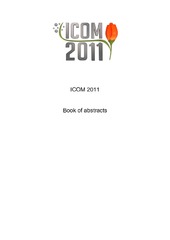Приказ основних података о документу
Novel asymmetric interpenetrating proton-conducting membrane
| dc.creator | Radovanović, Filip | |
| dc.creator | Kellner, Michael | |
| dc.creator | Matović, Jovan | |
| dc.creator | Liska, Robert | |
| dc.date.accessioned | 2017-06-10T15:45:07Z | |
| dc.date.issued | 2011 | |
| dc.identifier.uri | https://dais.sanu.ac.rs/123456789/788 | |
| dc.description.abstract | Fuel cells comprising proton-conducting polymer membranes are focus of active research due to their versatile applications as energy sources in the automotive, stationary and portable fields. A fluoro-ionomer membrane, such as Nafion available from Du Pont de Nemours, is commonly used for these applications. High price of these membranes and their limitations, such as high crossover of methanol in Direct Methanol Fuel Cells and performance loss under conditions of low relative humidity, have led to investigations of other proton-conducting membranes from less expensive, nonfluorinated materials. Proton-conducting membranes with interpenetrating polymer network morphology have been a subject of growing interest in recent years [1]. These materials are generally prepared by either in situ polymerization and cross-linking starting from initial reactants, or by sequential synthesis starting from a polymer network swollen with necessary precursors that subsequently react to form the interpenetrating structure within the first network. An interplay of the chemical reaction and liquid-liquid demixing kinetics has a determining effect on the final membrane morphology. Interpenetrating domains of relatively small size are typical, as opposed to macroscopic phase separation observed in most polymer blends. Such fine morphology of interpenetrating proton-conducting membranes often leads to improvement in mechanical strength and reactant barrier properties. Novel asymmetric membranes comprising proton-conducting channels of cross-linked sulfonic acid functionalized ionomers embedded within a matrix of thermally resistant, glassy polymer were prepared and evaluated in our laboratories. These membranes have an integral top skin layer with fine biomimetic proton-conducting channels, which provides a barrier against methanol crossover, on top of a coarser proton-conducting support. Conductivity of asymmetric membranes over a range of initial polymer concentrations and ion-exchange capacities (IEC) was just slightly lower than for the corresponding symmetric membranes. These conductivity measurements were carried out using a 4-point in-plane method. It is expected that the planned measurements in the direction of membrane thickness will result in significantly higher conductivities due to the anisotropic membrane morphology. | en |
| dc.format | (2011) - | |
| dc.format | application/pdf | |
| dc.language | en | |
| dc.relation | info:eu-repo/grantAgreement/EC/FP7/228943/EU// | |
| dc.rights | openAccess | |
| dc.source | ICOM 2011: Book of abstracts | en |
| dc.subject | proton-conducting membranes | |
| dc.subject | fuel cells | |
| dc.subject | polymer networks | |
| dc.title | Novel asymmetric interpenetrating proton-conducting membrane | en |
| dc.type | conferenceObject | |
| dc.rights.license | ARR | |
| dcterms.abstract | Радовановић, Филип; Келлнер, Мицхаел; Матовиц, Јован; Лиска, Роберт; | |
| dc.type.version | publishedVersion | |
| dc.identifier.fulltext | https://dais.sanu.ac.rs/bitstream/id/21743/785.pdf | |
| dc.identifier.rcub | https://hdl.handle.net/21.15107/rcub_dais_788 |

